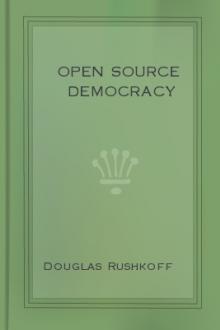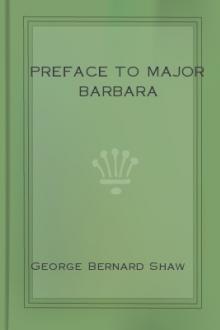The Fifteen Decisive Battles of the World from Marathon to Waterloo, Edward Creasy [simple e reader TXT] 📗

- Author: Edward Creasy
- Performer: -
Book online «The Fifteen Decisive Battles of the World from Marathon to Waterloo, Edward Creasy [simple e reader TXT] 📗». Author Edward Creasy
Wellington remained at the Duchess of Richmond’s ball at Brussels till about three o’clock in the morning of the 16th, “showing himself very cheerful” as Baron Muffling, who accompanied him, observes. [Muffling, p. 233.] At five o’clock the Duke and the Baron were on horseback, and reached the position at Quatre Bras about eleven. As the French, who were in front of Frasne, were perfectly quiet, and the Duke was informed that a very large force under Napoleon in person was menacing Blucher, it was thought possible that only a slight detachment of the French was posted at Frasne in order to mask the English army. In that event Wellington, as he told Baron Muffling, would be able to employ his whole strength in supporting the Prussians: and he proposed to ride across from Quatre Bras to Blucher’s position, in order to concert with him personally the measures which should be taken in order to bring on a decisive battle with the French.
Wellington and Muffling rode accordingly towards Ligny, and found Marshal Blucher and his staff at the windmill of Bry, near that village. The Prussian army, 80,000 strong, was drawn up chiefly along a chain of heights, with the villages of Sombref, St.
Amand, and Ligny in their front. These villages were strongly occupied by Prussian detachments, and formed the keys of Blucher’s position. The heads of the columns which Napoleon was forming for the attack, were visible in the distance. The Duke asked Blucher and General Gneisenau (who was Blucher’s adviser in matters of strategy) what they wished him to do, Muffling had already explained to them in a few words the Duke’s earnest desire to support the Field-Marshal, and that he would do all that they wished, provided they did not ask him to divide his army, which was contrary to his principles. The Duke wished to advance with his army (as soon as it was concentrated) upon Frasne and Gosselies, and thence to move upon Napoleon’s flank and rear. The Prussian leaders preferred that he should march his men from Quatre Bras by the Namur road, so as to form a reserve in rear of Blucher’s army. The Duke replied, “Well, I will come if I am not attacked myself,” and galloped back with Muffling to Quatre Bras, where the French attack was now actually raging.
Marshal Ney began the battle about two o’clock in the afternoon.
He had at this time in hand about 16,000 infantry, nearly 2,000
cavalry, and 38 guns. The force which Napoleon nominally placed at his command exceeded 40,000 men. But more than one half of these consisted of the first French corps d’armee, under Count d’Erlon; and Ney was deprived of the use of this corps at the time that he most required it, in consequence of its receiving orders to march to the aid of the Emperor at Ligny. A magnificent body of heavy cavalry under Kellerman, nearly 5,000
strong, and several more battalions of artillery were added to Ney’s army during the battle of Quatre Bras; but his effective infantry force never exceeded 16,000.
When the battle began, the greater part of the Duke’s army was yet on its march towards Quatre Bras from Brussels and the other parts of its cantonments. The force of the Allies, actually in position there, consisted only of a Dutch and Belgian division of infantry, not quite 7,000 strong, with one battalion of foot, and one of horse-artillery. The Prince of Orange commanded them. A wood, called the Bois de Bossu, stretched along the right (or western) flank of the position of Quatre Bras; a farmhouse and building, called Gemiancourt, stood on some elevated ground in its front; and to the left (or east), were the inclosures of the village of Pierremont. The Prince of Orange endeavoured to secure these posts; but Ney carried Gemiancourt in the centre, and Pierremont on the east, and gained occupation of the southern part of the wood of Bossu. He ranged the chief part of his artillery on the high ground of Gemiancourt, whence it played throughout the action with most destructive effect upon the Allies. He was pressing forward to further advantages, when the fifth infantry division under Sir Thomas Picton and the Duke of Brunswick’s corps appeared upon the scene. Wellington (who had returned to Quatre Bras from his interview with Blucher shortly before the arrival of these forces) restored the fight with them; and, as fresh troops of the Allies arrived, they were brought forward to stem the fierce attacks which Ney’s columns and squadrons continued to make with unabated gallantry and zeal.
The only cavalry of the anglo-allied army that reached Quatre Bras during the action, consisted of Dutch and Belgians, and a small force of Brunswickers, under their Duke, who was killed on the field. These proved wholly unable to encounter Kellerman’s cuirassiers and Pire’s lancers; the Dutch and Belgian infantry also gave way early in the engagement; so that the whole brunt of the battle fell on the British and German infantry. They sustained it nobly. Though repeatedly charged by the French cavalry, though exposed to the murderous fire of the French batteries, which from the heights of Gemiancourt sent shot and shell into the devoted squares whenever the French horseman withdrew, they not only repelled their assailants, but Kempt’s and Pack’s brigades, led, on by Picton, actually advanced against and through their charging foes, and with stern determination made good to the end of the day the ground which they had thus boldly won. Some, however, of the British regiments were during the confusion assailed by the French cavalry before they could form squares, and suffered severely. One regiment, the 92d, was almost wholly destroyed by the cuirassiers. A French private soldier, named Lami, of the 8th regiment of cuirassiers, captured one of the English colours, and presented it to Ney. It was a solitary trophy. The arrival of the English Guards about half-
past six o’clock, enabled the Duke to recover the wood of Bossu, which the French had almost entirely won, and the possession of which by them would have enabled Ney to operate destructively upon the allied flank and rear. Not only was the wood of Bossu recovered on the British right, but the inclosures of Pierremont were also carried on the left. When night set in the French had been driven back on all points towards Frasne; but they still held the farm of Gemiancourt in front of the Duke’s centre.
Wellington and Muffling were unacquainted with the result of the collateral battle between Blucher and Napoleon, the cannonading of which had been distinctly audible at Quatre Bras throughout the afternoon and evening. The Duke observed to Muffling, that of course the two Allied armies would assume the offensive against the enemy on the morrow; and consequently, it would be better to capture the farm at once, instead of waiting till next morning. Muffling agreed in the Duke’s views and Gemiancourt was forthwith attacked by the English and captured with little loss to its assailants. [Muffling, p. 242.]
Meanwhile the French and the Prussians had been fighting in and round the villages of Ligny, Sombref, and St. Armand, from three in the afternoon to nine in the evening, with a savage inveteracy almost unparalleled in modern warfare. Blucher had in the field, when he began the battle, 83,417 men, and 224 guns. Bulow’s corps, which was 25,000 strong, had not joined him; but the Field-Marshal hoped to be reinforced by it, or by the English army before the end of the action. But Bulow, through some error in the transmission of orders, was far in the rear; and the Duke of Wellington was engaged, as we have seen, with Marshal Ney.
Blucher received early warning from Baron Muffling that the Duke could not come to his assistance; but, as Muffling observes, Wellington rendered the Prussians the great service of occupying more than 40,000 of the enemy, who otherwise would have crushed Blucher’s right flank. For, not only did the conflict at Quatre Bras detain the French troops which actually took part in it, but d’Erlon received orders from Ney to join him, which hindered d’Erlon from giving effectual aid to Napoleon. Indeed, the whole of d’Erlon’s corps, in consequence of conflicting directions from Ney and the Emperor, marched and countermarched, during the 16th, between Quatre Bras and Ligny without firing a shot in either battle.
Blucher had, in fact, a superiority of more than 12,000 in number over the French army that attacked him at Ligny. The numerical difference was even greater at the beginning of the battle, as Lobau’s corps did not come up from Charleroi till eight o’clock.
After five hours and a half of desperate and long-doubtful struggle, Napoleon succeeded in breaking the centre of the Prussian line at Ligny, and in forcing his obstinate antagonists off the field of battle. The issue was attributable to his skill, and not to any want of spirit or resolution on the part of the Prussian troops; nor did they, though defeated, abate one jot in discipline, heart, or hope. As Blucher observed, it was a battle in which his army lost the day but not its honour. The Prussians retreated during the night of the 16th, and the early part of the 17th, with perfect regularity and steadiness, The retreat was directed not towards Maestricht, where their principal depots were established, but towards Wavre, so as to be able to maintain their communication with Wellington’s army, and still follow out the original plan of the campaign. The heroism with which the Prussians endured and repaired their defeat at Ligny, is more glorious than many victories.
The messenger who was sent to inform Wellington of the retreat of the Prussian army, was shot on the way; and it was not until the morning of the 17th that the Allies, at Quatre Bras, knew the result of the battle of Ligny. The Duke was ready at daybreak to take the offensive against the enemy with vigour, his whole army being by that time fully assembled. But on learning that Blucher had been defeated, a different course of action was clearly necessary. It was obvious that Napoleon’s main army would now be directed against Wellington, and a retreat was inevitable. On ascertaining that the Prussian army had retired upon Wavre, that there was no hot pursuit of them by the French, and that Bulow’s corps had taken no part in the action at Ligny, the Duke resolved to march his army back towards Brussels, still intending to cover that city, and to halt at a point in a line with Wavre, and there restore his communication with Blucher. An officer from Blucher’s army reached the Duke about nine o’clock, from whom he learned the effective strength that Blucher still possessed, and how little discouraged his ally was by the yesterday’s battle.
Wellington sent word to the Prussian commander that he would halt in the position of Mont St. Jean, and accept a general battle with the French, if Blucher would pledge himself to come to his





Comments (0)